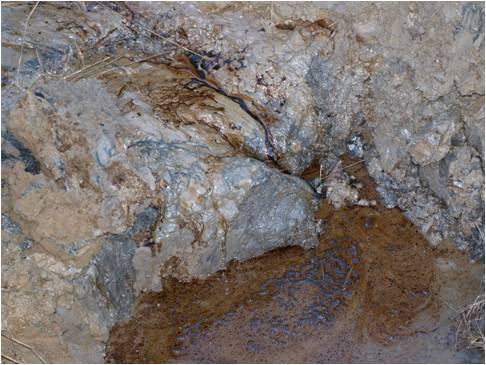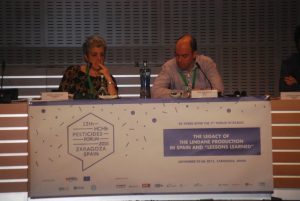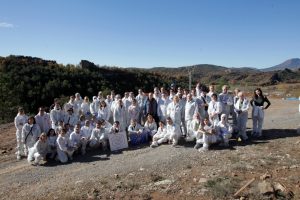Sabiñánigo is a municipality with a long industrial tradition. INQUINOSA was based in Sabiñánigo and produced more than 900 tons of lindane per year between 1975 and 1989. The production of this insecticide was very inefficient; for each ton of lindane, more than 8 tons of toxic waste were generated. It is estimated that INQUINOSA generated around 115,000 Tm of toxic solid waste, which was deposited without any protective measures in the landfills of Sardas and Bailín. In addition to this very low water-soluble solid waste (0.03 mg per liter of water), a volume of around 4,000 Tm of dense liquid waste (DNAPL), much more soluble in water, was dumped. The Sardas and Bailín landfills did not have any waterproofing measures, which allowed the water in contact with the waste to contaminate surface and groundwater. However, the presence of DNAPL (Dense Non-Aqueous Phase Liquid) poses the greatest risk to the water due to its high pollutant load. DNAPL is a mixture of more than 28 chlorinated compounds, with a higher density than water and not miscible with it; from landfills, it has infiltrated deep below the groundwater and has reached depths of more than 40 meters. View of the old landfill, with a surface sealing, before 2014. After the shutdown of the factory and the non-compliance with the control obligations by INQUINOSAs managers for more than 30 years, the Government of Aragon has assumed the responsibility, by carrying out numerous actions for the control and elimination of these wastes. In 2016, the DISCOVERED LIFE project demonstrated the feasibility of eliminating pollutants in solution by injecting an oxidant. Sodium persulfate was used under alkaline conditions (adding caustic soda) in a section of the Bailin aquifer without the presence of DNAPL, degrading between 90 and 99% of the pollutant compounds (from benzene to the entire chlorinated series up to HCH) dissolved in the water. Since its detection in the Bailin aquifer in 2004, DNAPL has been extracted by pumping in numerous wells, until 2019 when pumping extraction was considered no longer efficient. It was estimated that a volume of approx. 4 m3 of DNAPL remained impregnated in the rock fractures or trapped in poorly communicated areas of the aquifer, prolonging the intense contamination of the waters that come into contact with the residue. Therefore, alternative extraction and/or degradation techniques for the pollutant had to be considered. The objective of the LIFE SURFING project is to destroy the residual DNAPL by combining two remediation techniques, the use of surfactants (industrial soaps) and oxidants. Residues from the manufacture of lindane cause serious effects on human health and the environment, including several compounds that are persistent in the environment, bioaccumulative, toxic, and teratogenic agents, some are carcinogenic agents which act as endocrine disruptors. Various agreements and regulations accepted by the Spanish state, including the Aarhus Protocol and the Stockholm Convention, prohibit their use and propose their definitive and irreversible elimination. Many countries have been affected by this problem due to the manufacture and intense use of lindane as a pesticide in the second half of the 20th century. See graphic of DNAPL extraction. Closed old HCH landfill. Nowadays. DNAPL Sample. The type of contaminant buried in the Bailin landfill is composed by a mixture of HCH isomers and other chemical compounds coming from the failed reactions of the lindane production. These exist in the subsoil in form of a dense non-aqueous phase liquid or DNAPL that, when coming into contact with the groundwater, produce a contamination plume which includes a wide variety of organo-chlorinated compounds. DNAPL displacement in the aquifer is controlled by gravity and its high density. This is located in fractures, 30 to 40 m under the ground level. Direct (from water to the rock matrix) as well as inverse (from the matrix to the groundwater) diffusion mechanisms are happening in the aquifer. These mechanisms contribute to the existence of considerable residual concentrations in the water moving through the fractures. Contaminant behavior in the aquifer Migration of the contaminant in the underground From 2014 to 2017, the project “Life DISCOVERED” was implemented in the area. “Life DISCOVERED (LIFE ENV/ES/000767) was a demonstrative project for the soil remediation of dissolved contaminants in the groundwater of Bailín aquifer. It was a demonstrative project cofinanced by the European Union to remediate soils contaminated by pesticides by using chemical oxidation on them in the area of Sabiñanigo (Huesca). One of the main tasks was to demonstrate whether the high rates of contaminant destruction in laboratory were also happening on field. To achieve that, a pilot test (ISCO) was performed with the objective of reducing the contaminant load of the aquifer transforming it in less harming or innocuous compounds. The Committee of Organization programmed a 3 days event with conferences and workshops and a fourth day of site visit.
Background


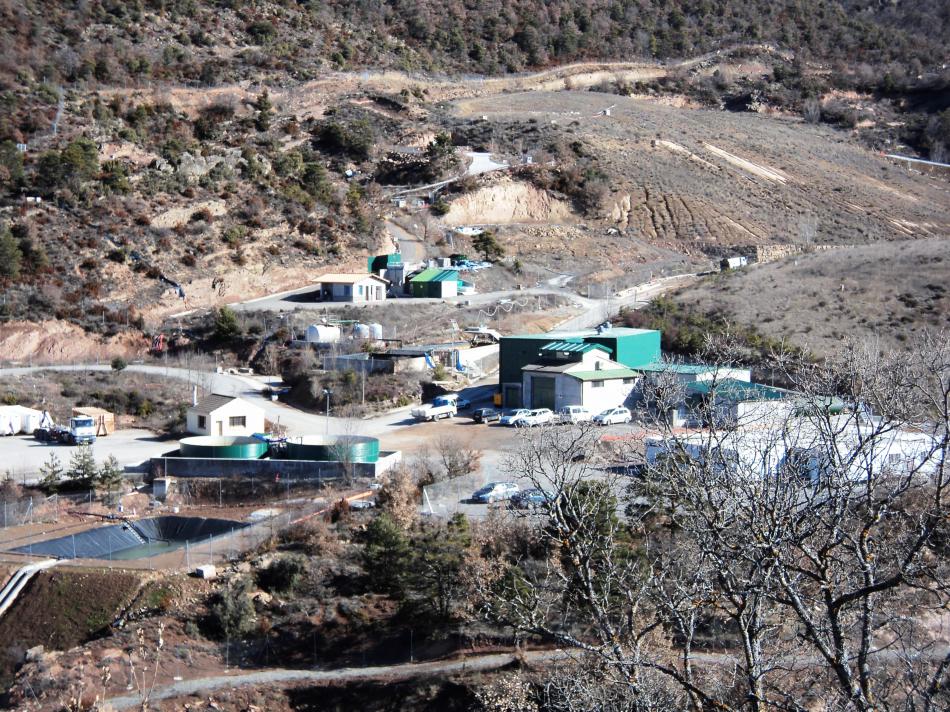
THE DNAPL

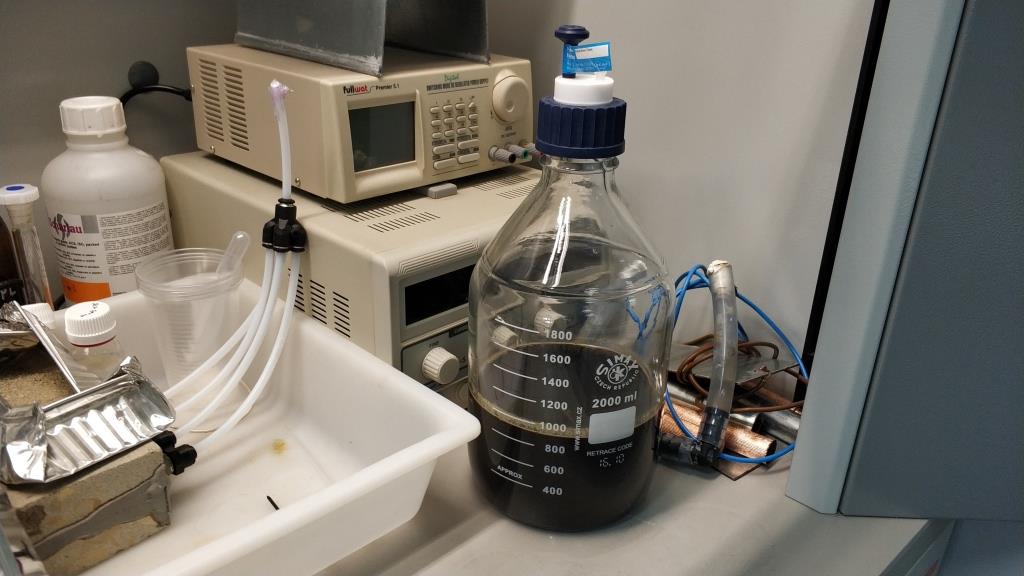
In this plume, 5 out of the 12 contaminants included in Regulation (CE) no. 852/2004 and included in the Stockholm Convention as cause of adverse effects in humans and the ecosystems (hexachexaclorobencenohlorobenzene (HCB), alfa hexachlorocyclohexane (α-HCH), beta hexachlorocyclohexane (β-HCH), lindane and pentachlorobenzene).


RISK
Efects on health
Environmental effects
Life Discovered
The 13th International HCH Forum was organized in Saragossa days 3 to 6 of November 2015 in the project framework.



